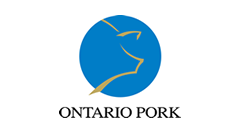Development of an in vitro/in vivo correlation method to assess the efficiency of oral drug release from medicated feeds in swine
Dr. Jerome del Castillo, University of Montreal
Summary
 For the last 70 years, feed has been used as a convenient drug administration vehicle for group medication of pigs. Once they satisfy the requirements for regulatory approval, the dietary drug premixes may be admixed to any kind of feed, irrespective of its composition. Even though the demonstration of safety and therapeutic efficacy is mandatory for the regulatory approval of veterinary drugs, the outcome of oral medication in pigs is inconsistent [1]. A possible cause that has been poorly explored so far is the presence of feed-drug interactions that modify the oral absorption of dietary drugs [2]. Contrariwise to the manufacturers of oral drugs for humans or pets, the dietary drug premix manufacturers must document only their incompatibilities with other feed additives, not their interactions with the major feedstuffs used in formulating the medicated feeds. Because dissolution in the gastrointestinal fluids is the prerequisite to the absorption and therapeutic effect of oral drugs, we hypothesize that the water-holding capacity of feedstuffs applies to the gastrointestinal fluids too and hinders the drug release from the medicated feeds used in pigs. The WHC appears to be a promising indicator of the feedstuff-drug premix interactions for dietary LIN and CTC. Our findings initiate a novel precision-feeding approach for optimizing the use of oral drugs in swine production.
For the last 70 years, feed has been used as a convenient drug administration vehicle for group medication of pigs. Once they satisfy the requirements for regulatory approval, the dietary drug premixes may be admixed to any kind of feed, irrespective of its composition. Even though the demonstration of safety and therapeutic efficacy is mandatory for the regulatory approval of veterinary drugs, the outcome of oral medication in pigs is inconsistent [1]. A possible cause that has been poorly explored so far is the presence of feed-drug interactions that modify the oral absorption of dietary drugs [2]. Contrariwise to the manufacturers of oral drugs for humans or pets, the dietary drug premix manufacturers must document only their incompatibilities with other feed additives, not their interactions with the major feedstuffs used in formulating the medicated feeds. Because dissolution in the gastrointestinal fluids is the prerequisite to the absorption and therapeutic effect of oral drugs, we hypothesize that the water-holding capacity of feedstuffs applies to the gastrointestinal fluids too and hinders the drug release from the medicated feeds used in pigs. The WHC appears to be a promising indicator of the feedstuff-drug premix interactions for dietary LIN and CTC. Our findings initiate a novel precision-feeding approach for optimizing the use of oral drugs in swine production.
Project No: 19-04
Time Period: Apr 2019-Oct 2020
Funding provided by Ontario Pork

